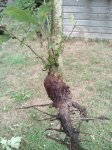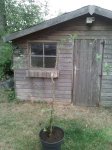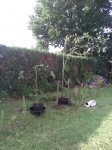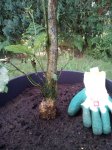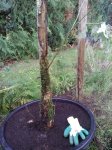Fonz
Chumono
I have access to a bunch of oak trees that are growing in forest owned by my mother. I'm new to this so excuse me if this all sounds stupid but here we go anyway.
My question is if it's possible to do trunk chops on some of these Oaks? Keep in mind that no root work has been done, they are about 4-5 metres (13-16ft) tall, have a trunk base varying from 5-10 cm (2-4") and they all are standing in very shaded places.
One of my concerns is the shade will not allow to let the chopped trunk survive.
Any advise on what's possible or what I should do best is much appreciated.
I've attached some pics.
Pic 1: 4" trunk
Pic 2: 2" trunk
Pic 3: 4" trunk with some deadwood
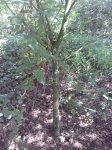
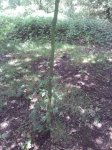
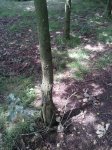
My question is if it's possible to do trunk chops on some of these Oaks? Keep in mind that no root work has been done, they are about 4-5 metres (13-16ft) tall, have a trunk base varying from 5-10 cm (2-4") and they all are standing in very shaded places.
One of my concerns is the shade will not allow to let the chopped trunk survive.
Any advise on what's possible or what I should do best is much appreciated.
I've attached some pics.
Pic 1: 4" trunk
Pic 2: 2" trunk
Pic 3: 4" trunk with some deadwood





